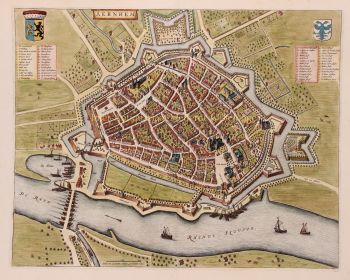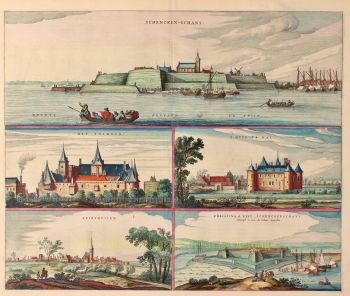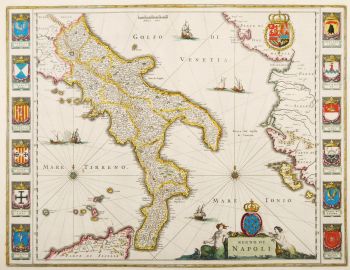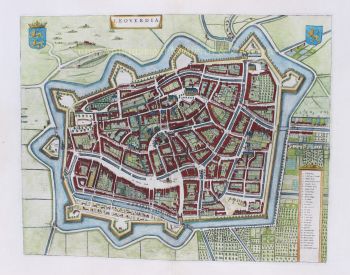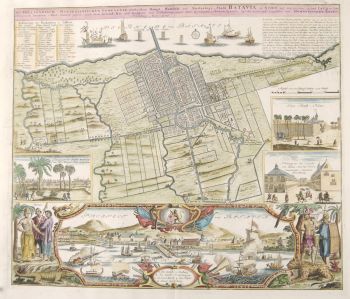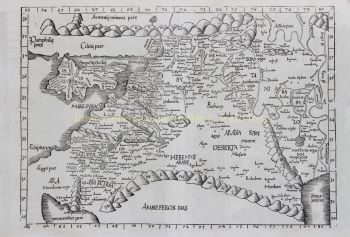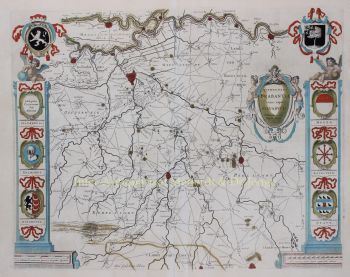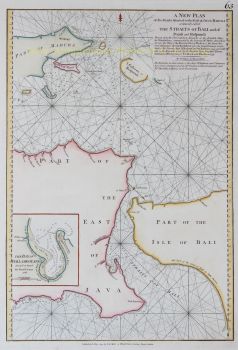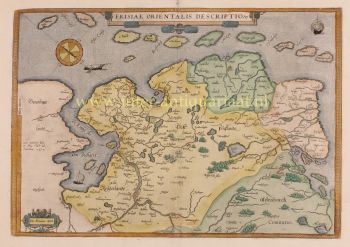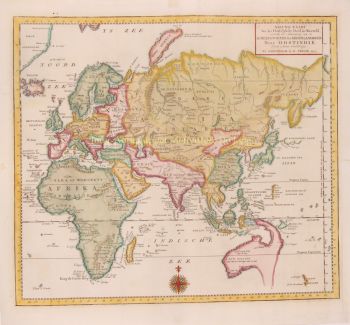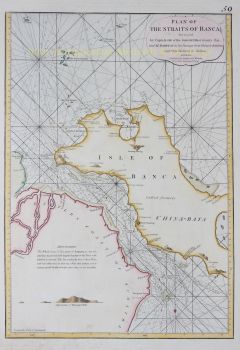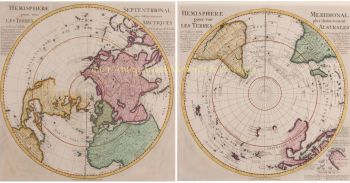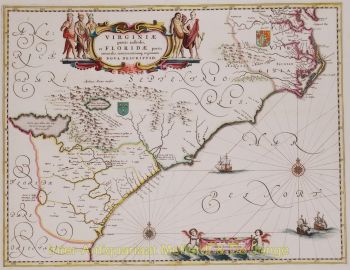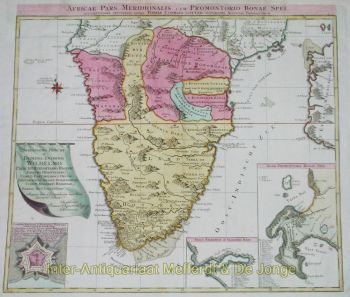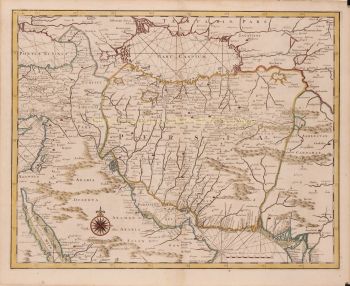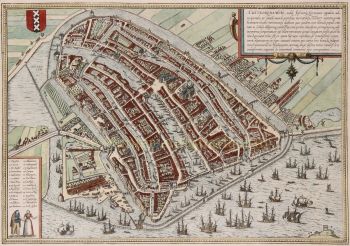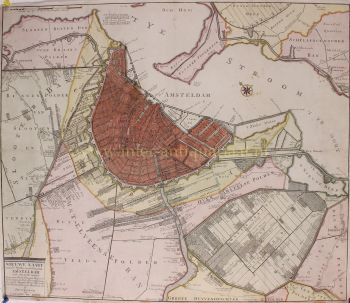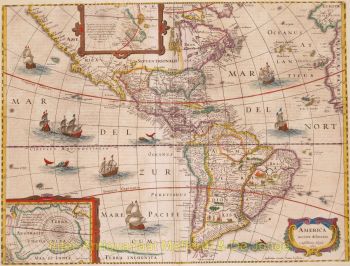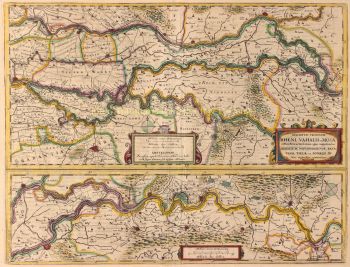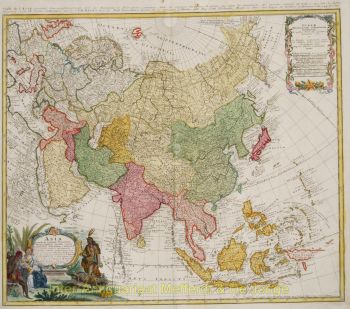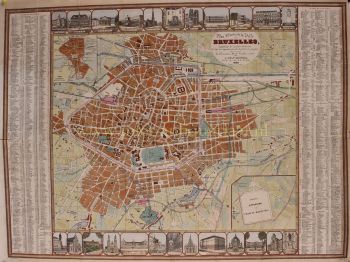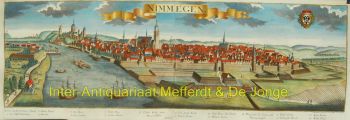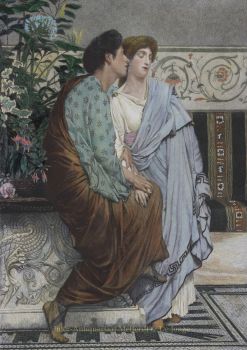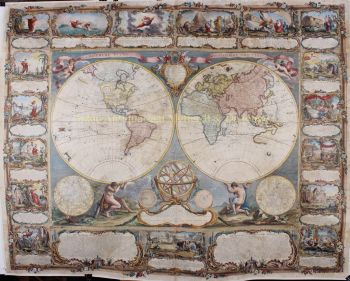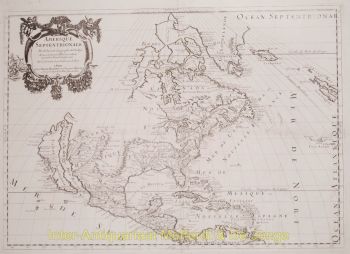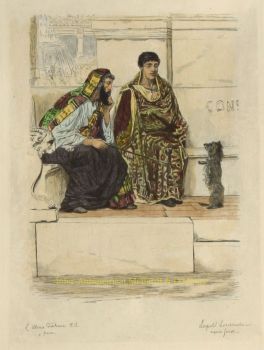Russia 1660
Joan Blaeu
€ 2.150
Inter-Antiquariaat Mefferdt & De Jonge
- About the artwork17th-CENTURY RUSSIA “Tabula Russiae...”. Copper engraving of Russia with armorial cartouche, large inset plan of Moscow and smaller inset view of Archangelsk. Published by Joan Blaeu in Amsterdam around 1660, as part of a Latin edition of his Atlas Maior. Colured by a later hand. Size (print): approx. 43 x 55 cm. The Atlas Maior in its various editions was the largest atlas ever published. It was justly famed (“the greatest and finest atlas ever published” - Koeman) for its production values, its high typographic standard, the quality of its engraving, ornamentation, binding and colouring. Blaeu’s atlas frequently served as the official gift of the Dutch Republic to princes and other authorities. It is one of the most lavish and highly prized of all seventeenth century illustrated books. The maps are embellished in the Baroque style, and many rank among the most beautiful ever made. This map of Russia, originally part of the Atlas Maior volume II, is based on Hessel Gerritsz’ important 1614 map of Russia, which he compiled from manuscripts brought back by Isaac Massa. Massa was a wealthy Dutch grain trader and the envoy to Moscow during the reign of Boris Gudunov. Hessel Gerritsz in turn, was the first exclusive cartographer of the Dutch East India Company and considered one of the foremost Dutch cartographers of the seventeenth century. Price: €2.150,-
- About the artist
Joan Blaeu (1596-1673), was born on the 23rd of September in 1596 in Alkmaar.
He was a Dutch cartographer born in Alkmaar. He followed the footsteps of his father, cartographer Willem Blaeu.
In 1620 he became a doctor of law but he joined the work of his father. In 1635 they published the Atlas Novus (full title: Theatrum orbis terrarum, sive, Atlas novus) in two volumes. Joan and his brother Cornelius took over the studio after their father died in 1638. Joan became the official cartographer of the Dutch East India Company.
Blaeu's world map, Nova et Accuratissima Terrarum Orbis Tabula, incorporating the discoveries of Abel Tasman, was published in 1648. This map was revolutionary in that it "depicts the solar system according to the heliocentric theories of Nicolaus Copernicus, which show the earth revolving around the sun.... Although Copernicus's groundbreaking book On the Revolutions of the Spheres had been first printed in 1543, just over a century earlier, Blaeu was the first mapmaker to incorporate this revolutionary heliocentric theory into a map of the world."
Blaeu's map was copied for the map of the world set into the pavement of the Groote Burger-Zaal of the new Amsterdam Town Hall, designed by the Dutch architect Jacob van Campen (now the Amsterdam Royal Palace), in 1655.
Blaeu's Hollandia Nova was also depicted in his Archipelagus Orientalis sive Asiaticus published in 1659 in the Kurfürsten Atlas (Atlas of the Great Elector). and used by Melchisédech Thévenot to produce his map, Hollandia Nova—Terre Australe (1664).
As "Jean Blaeu", he also published the 12 volume "Le Grand Atlas, ou Cosmographie blaviane, en laquelle est exactement descritte la terre, la mer, et le ciel". One edition is dated 1663. That was folio (540 x 340 mm), and contained 593 engraved maps and plates. In March 2015, a copy was on sale for £750,000.
Around 1649 Joan Blaeu published a collection of Dutch city maps named Toonneel der Steeden (Views of Cities). In 1651 he was voted into the Amsterdam council. In 1654 Joan published the first atlas of Scotland, devised by Timothy Pont. In 1662 he reissued the Atlas Novus, also known as Atlas Maior, in 11 volumes, and one for oceans.
A cosmology was planned as their next project, but a fire destroyed the studio completely in 1672.
Joan Blaeu died in Amsterdam the following year, 1673. He was buried in the Westerkerk at Amsterdam.
Are you interested in buying this artwork?
Artwork details
Related artworks
- 1 - 4 / 12
- 1 - 4 / 24
- 1 - 4 / 12






